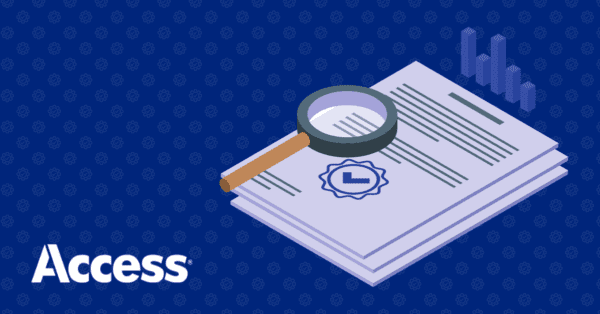
Access defines Information Governance (IG) as everything having to do with the capture, formation, usage, storage, and deletion of information. It spans paper records, electronic documents, data, and any other kind of content. In addition to records and information management (RIM), information governance draws on legal, risk, and IT expertise to protect, use, and drive value across the organization.
This sounds like an important topic, right? That’s why there’s an entire month dedicated to raising awareness of information governance. February is Global Information Governance Month — it’s the perfect time to reflect on the importance of effective data and information management and identify where there is still room to improve.
In this blog post, we’ll dive into 3 common IG challenges organizations face and how to tackle them.
1. Poor or Manual Data Classification
One of the most common information governance challenges is poor data classification. It’s faster and easier than ever to create data, but how much of it qualifies to be a record? According to AIIM, the answer is approximately half.
The variety of ways data is created only adds to the chaos and inefficiencies as organizations try to sort out what is or isn’t a record. If it is, then it must be managed. If it isn’t, then it’s merely ROT: Redundant, Obsolete, and Trivial. The trouble, Information Technology Leader and writer Kevin Parker notes, is that “[more] ROT leads to higher inefficiency and higher risk. Reducing ROT increases efficiency and lowers risk.”
With the sheer volume of data created every day, organizations shouldn’t try to handle this manually. Instead, organizations should tackle this from two different aspects— classify data at the time of creation and implement technologies that can automatically classify existing data. Through information governance in conjunction with better policies, organizations can have a much clearer idea of what information they have on hand.
2. Lack of an Accurate Inventory
Organizations can’t govern what they don’t know they have.
When it comes to Information Governance, many organizations are unaware of the amount of data they own and retain information that should be disposed of, leading to risks, and hindering effective governance.
Tech Target reports that “half of an organization’s retained information has no business value,” and that “a large company with 10 petabytes of data could be spending as much as $34.5 million on data that could be deleted.”
This over-retention comes at a cost in more ways than one as it can also expose your organization to unnecessary risk. Should your organization be in possession of data that it no longer needs, it can complicate matters during a discovery process for litigation or a data breach.
To prevent information governance issues, organizations need to ensure they’re able to keep their inventory as accurate as possible by having the right tools for the job. While AI and machine learning are not able to be unsupervised in these efforts, it’s more efficient than hiring a team of contract attorneys for an indeterminate span of time.

5/7 Leveraging Your Data: A Journey Through 3 Essential Information Gates
Join our upcoming webinar, where we will guide you through the essential steps to be successful in the age of digital information. The Three Gates to Digital are your roadmap to harnessing the power of technology, improving efficiency, and achieving…
3. Misaligned Retention and Destruction Schedules
Remaining in compliance requires an information governance program that’s able to withstand the rigor of the various governing bodies which also might have conflicting requirements.
Your retention and destruction guidelines are the keystone to your organization’s information governance program. Having an accurate, up-to-date, and compliant retention schedule is your first and best line of defense when it comes to avoiding information governance challenges that can include fines and litigation. It allows you to justify why you are (or are not) retaining certain types of information.
For instance, records of a terminated employee must be retained for 40 years, even though those records often contain PII that is supposed to be destroyed far earlier than that. By having a retention schedule that accounts for that discrepancy, you can remain in compliance.
The best way to handle retention schedule creation and updating is by having a tool that can give you a single-pane view of your regulatory requirements, quickly understand which citations are necessary for which record series, and automatically push those regulations into your various repositories.
Meet Information Governance Challenges Head On
Looking for more information governance guidance?
Check out our digital information governance guide, Risks and Opportunities of Managing Information Chaos. Inside you’ll get an exact playbook for future-proofing your organization with well-thought-out approaches to intelligent information management.




